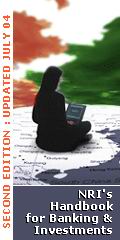|


|
Subprime Special
The term "subprime" refers to the credit status of the borrower, which is being less than ideal. Subprime lending is a general term that refers to the practice of making loans to borrowers who do not qualify for the best market interest rates because of their deficient credit history.
According to the U.S. Department of Treasury guidelines issued in 2001, "Subprime borrowers typically have weakened credit histories that include payment delinquencies, and possibly more severe problems such as charge-offs, judgments, and bankruptcies. They may also display reduced repayment capacity as measured by credit scores, debt-to-income ratios, or other criteria that may encompass borrowers with incomplete credit histories."
Subprime lending is also called B-Paper, near-prime, or second chance lending. Subprime lending encompasses a variety of credit instruments, including subprime mortgages, subprime car loans, and subprime credit cards, among others. A subprime loan is offered at a rate higher than A-paper loans due to the increased risk.
Subprime lending crisis, which began in the United States has become a financial contagion and has led to a restriction on the availability of credit in world financial markets. Hundreds of thousands of borrowers have been forced to default and several major subprime lenders have filed for bankruptcy.
Types of subprime lending
Subprime mortgages
Subprime mortgage loans are riskier loans in that they are made to borrowers unable to qualify under traditional, more stringent criteria due to a limited or blemished credit history. Subprime borrowers are generally defined as individuals with limited income or having FICO credit scores below 620 on a scale that ranges from 300 to 850. Subprime mortgage loans have a much higher rate of default than prime mortgage loans and are priced based on the risk assumed by the lender.
Although most home loans do not fall into this category, subprime mortgages proliferated in the early part of the 21st Century. About 21 percent of all mortgage originations from 2004 through 2006 were subprime, up from 9 percent from 1996 through 2004, says John Lonski, chief economist for Moody's Investors Service. Subprime mortgages totaled $600 billion in 2006, accounting for about one-fifth of the U.S. home loan market.
There are many different kinds of subprime mortgages, including:
interest-only mortgages, which allow borrowers to pay only interest for a period of time (typically 5-10 years);
“pick a payment” loans, for which borrowers choose their monthly payment (full payment, interest only, or a minimum payment which may be lower than the payment required to reduce the balance of the loan);
and initial fixed rate mortgages that quickly convert to variable rates.
This last class of mortgages has grown particularly popular among subprime lenders since the 1990s. Common lending vehicles within this group include the "2-28 loan", which offers a low initial interest rate that stays fixed for two years after which the loan resets to a higher adjustable rate for the remaining life of the loan, in this case 28 years. The new interest rate is typically set at some margin over an index, for example, 5% over a 12-month LIBOR. Variations on the "2-28" loan concept include the "3-27" and the "5-25".
>>> Go to Page 2
RELATED ARTICLES
Global Financial Crisis 2008 - A Special ...Click here
Limited impact on Asia-Pacific banks from subprime crisis ...Click here
Bank rating downgrades unnecessary on wide scale ...Click here
US Federal Reserve cuts discount lending rate ...Click here
Moody's on sub prime exposures of US banks ...Click here
S&P report on today's credit market risks ...Click here
CLICK FOR MORE FEATURES & STORIES
|
|
|


